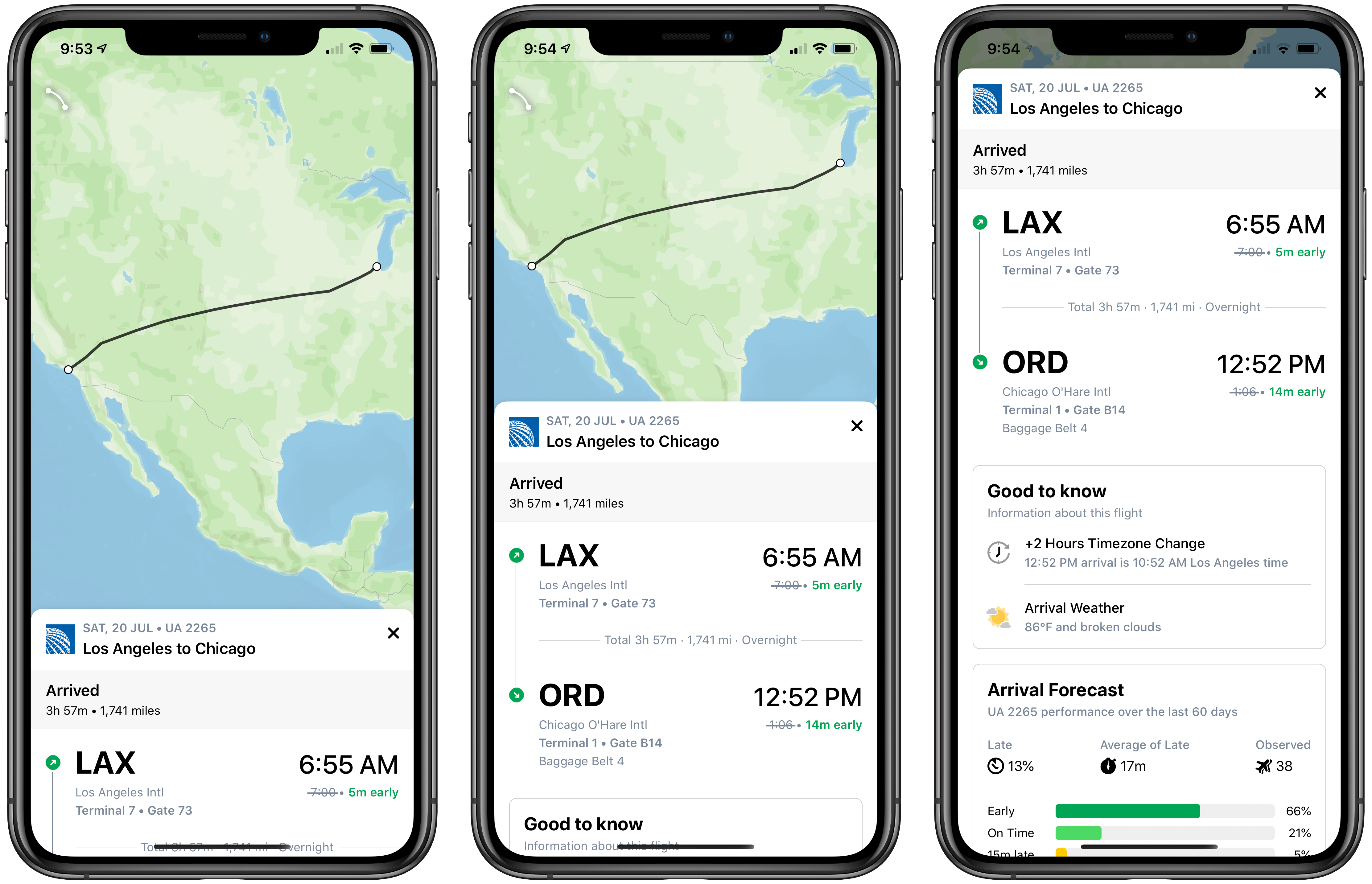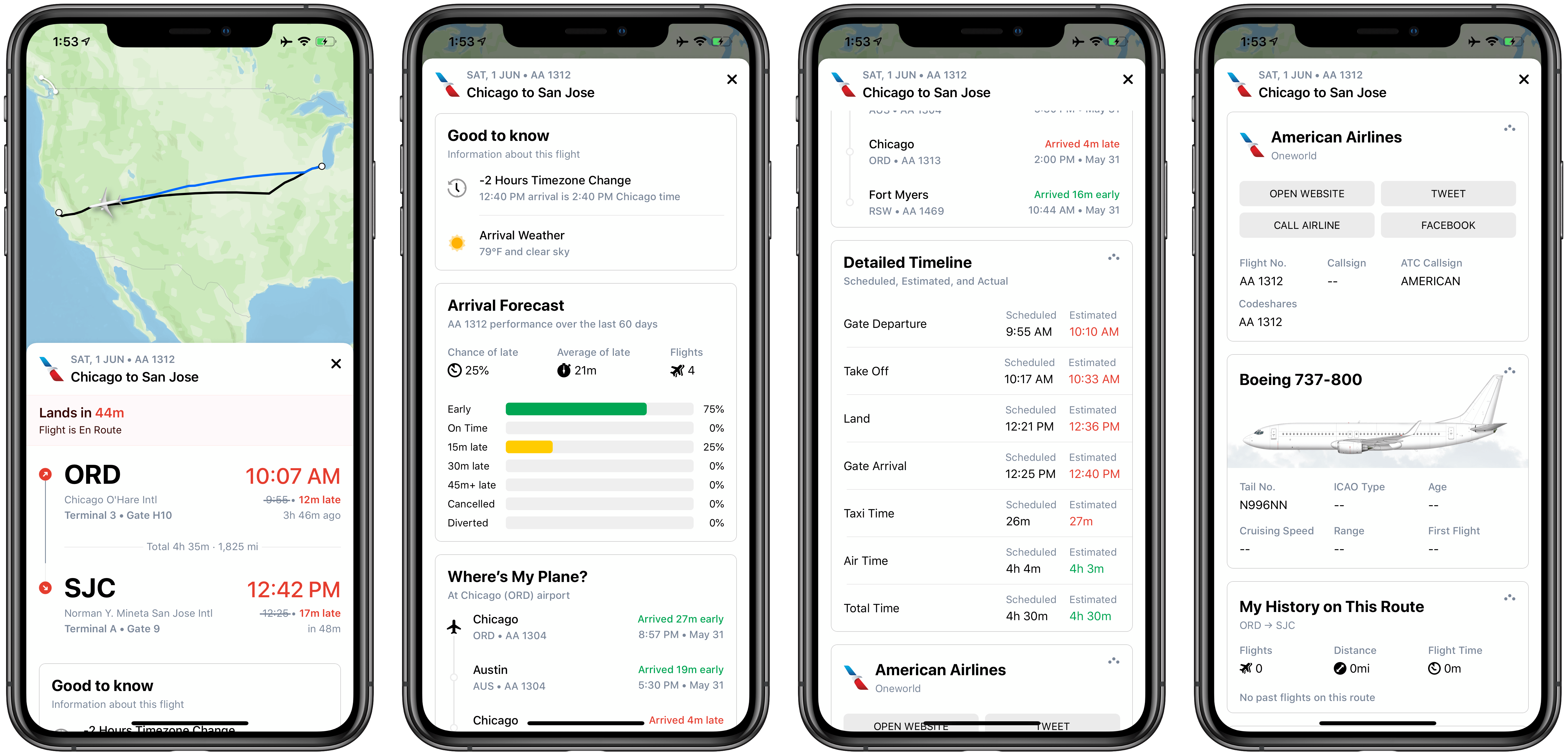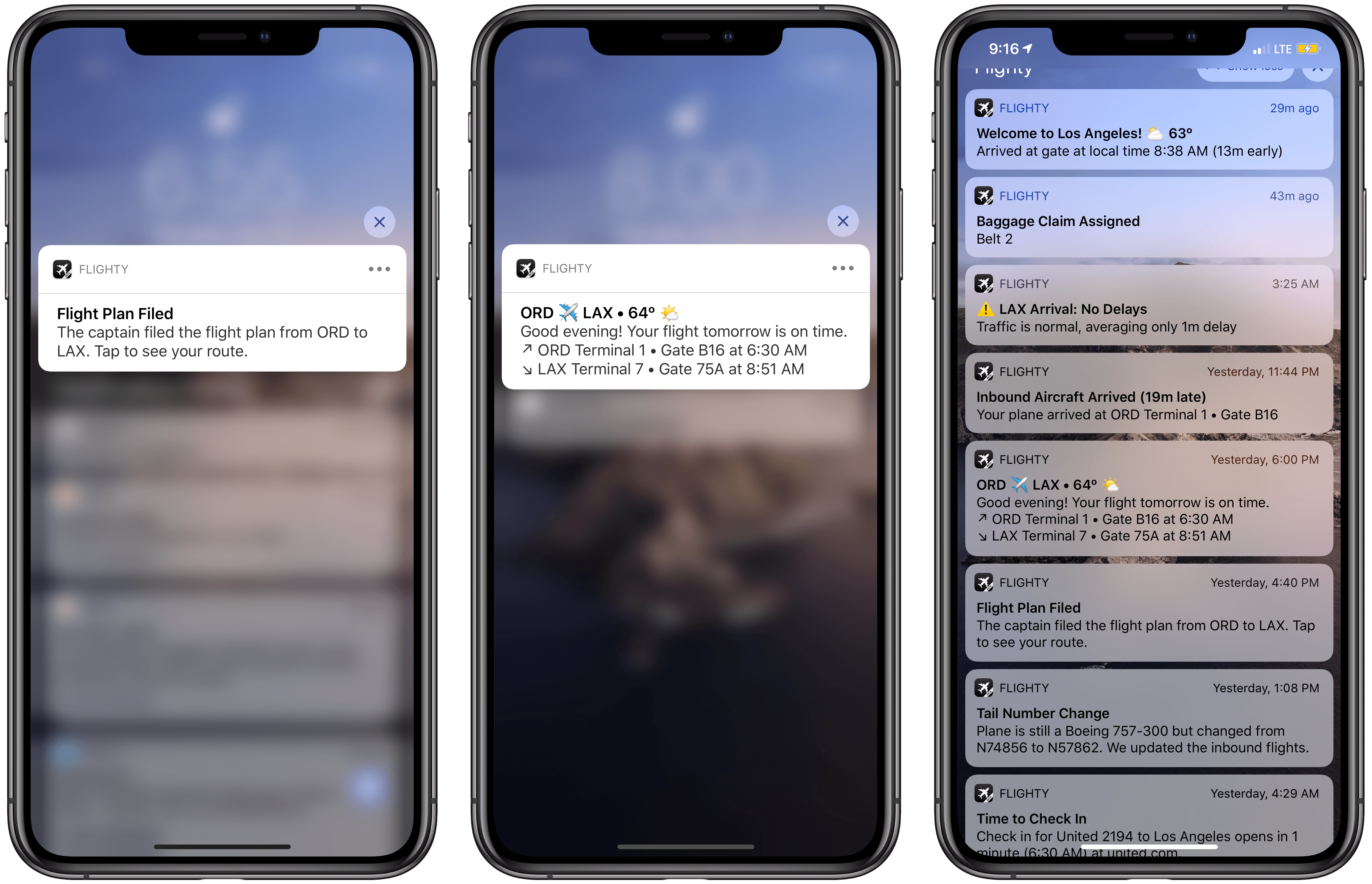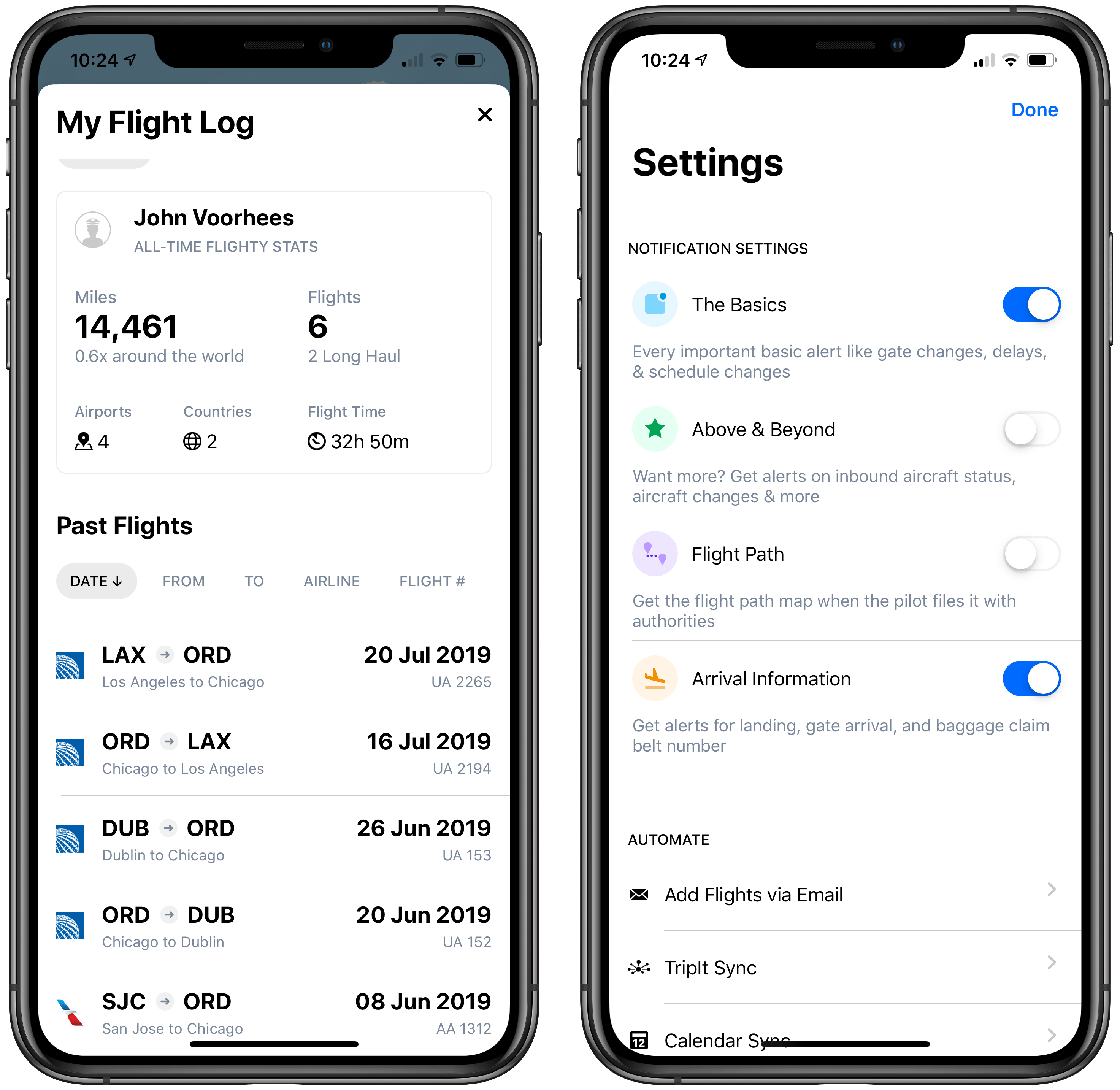Good flight tracking apps are few and far between. Simply by having a top-notch design, Flighty is superior to most of its competition. There’s more to the app than superior design though. Flighty combines smart design choices with traveler-centric features to generate a comprehensive picture of every flight you track. The result is a pro-level travel app that’s an excellent fit for frequent travelers.
That said, Flighty isn’t for everyone. The app is free to download and use to track basic flight details. However, much of Flighty’s value lies in its granular level of flight detail, extensive push notification options, and inbound flight tracking, which require an expensive subscription.
You can try Flighty’s pro features free for 14 days, after which the subscription costs $8.99/month or $69.99/year, which is currently $49.99/year for a limited time. That’s more than any other flight tracking app I’ve tried, but I expect many travelers who spend lots of time in the air will be willing to pay monthly or annually.
Fliers who don’t need push notifications or the level of detail Flighty’s subscription offers can still track basic flight data with the free version of the app. However, as I’ll explain in greater detail below, the prominence of banners advertising the app’s pro subscription doesn’t make that a good option.
There are precious few well-designed flight tracking apps, which is why I appreciate Flighty’s thoughtful approach to data so much. When you first open the app on an iPhone, the top three-quarters of the screen is dominated by a map that displays the path of your flight. Detailed flight data is presented in a card-like UI that peeks out from the bottom of the iPhone’s screen. On the iPad, the map dominates most of the screen with a narrow column on the left reserved for information about your flight. In the top right-hand corner of the map is a button for sharing your travel plans with others, though the app doesn’t have a system to automatically update someone else about your flight.
The map is attractive, but its dominance means you’ll need to scroll up to see anything but the most basic information about a flight. That’s mitigated by the fact that with one quick swipe, the column of data scrolls to the half-way point on an iPhone with a little haptic feedback, revealing more information. With a second swipe, the card UI extends nearly to the top of the iPhone’s screen, showing even more information. Beyond the first two swipes, the card UI scrolls in a long list of data divided into sections of related information.
Although the card UI’s design requires a fair amount of scrolling to see everything the app has to offer, I prefer that approach to tapping in and out of a view hierarchy. Flighty has also done an excellent job prioritizing the information it displays, which I’ve found helps minimize scrolling too.
The top section of Flighty has the basics you’d expect, including the date, airline, flight number, airport name, departure and arrival times, and terminal and gate information, which is updated periodically. I particularly like the simple, brightly-colored iconography that makes it easy to see if your flight is on time or delayed at a glance. The next section of Flighty, titled ‘Good to Know,’ includes information like weather and time zone changes for your destination and is available without a subscription.
Much of the remaining information available in Flighty requires a subscription. The ‘Arrival Forecast,’ which displays historical data about how often a flight is on time, ‘Where’s My Plane?,’ which tracks your inbound flight and whether it’s on time as it makes its way to your departure city, most of the ‘Detailed Timeline’ data about your flight and aircraft, and the ‘Record of Changes’ associated with your trip all require a subscription. The free version does, however, include gate arrival and departure information in the Detailed Timeline, aircraft type, airline details like a link to its website, Facebook page, telephone number, and Twitter handle, and your flight history for that particular route.
The two most interesting sections of pro data are the Arrival Forecast and Where’s My Plane? The Arrival Forecast provides statistics on how frequently the flight you’ve booked arrives at its destination on time. This information is available in other apps and online, but Flighty does a particularly good job conveying it graphically. Where’s My Plane?, which the Flighty team says is unique to their app and I haven’t seen anywhere else, tracks your airplane for the 25 hours leading up to your flight. Often, delays in getting aircraft to your departure city is the cause of delays for your flight, so Where’s My Plane? acts as a sort of early warning system giving you a heads up of a potential delay earlier than you might otherwise get it.
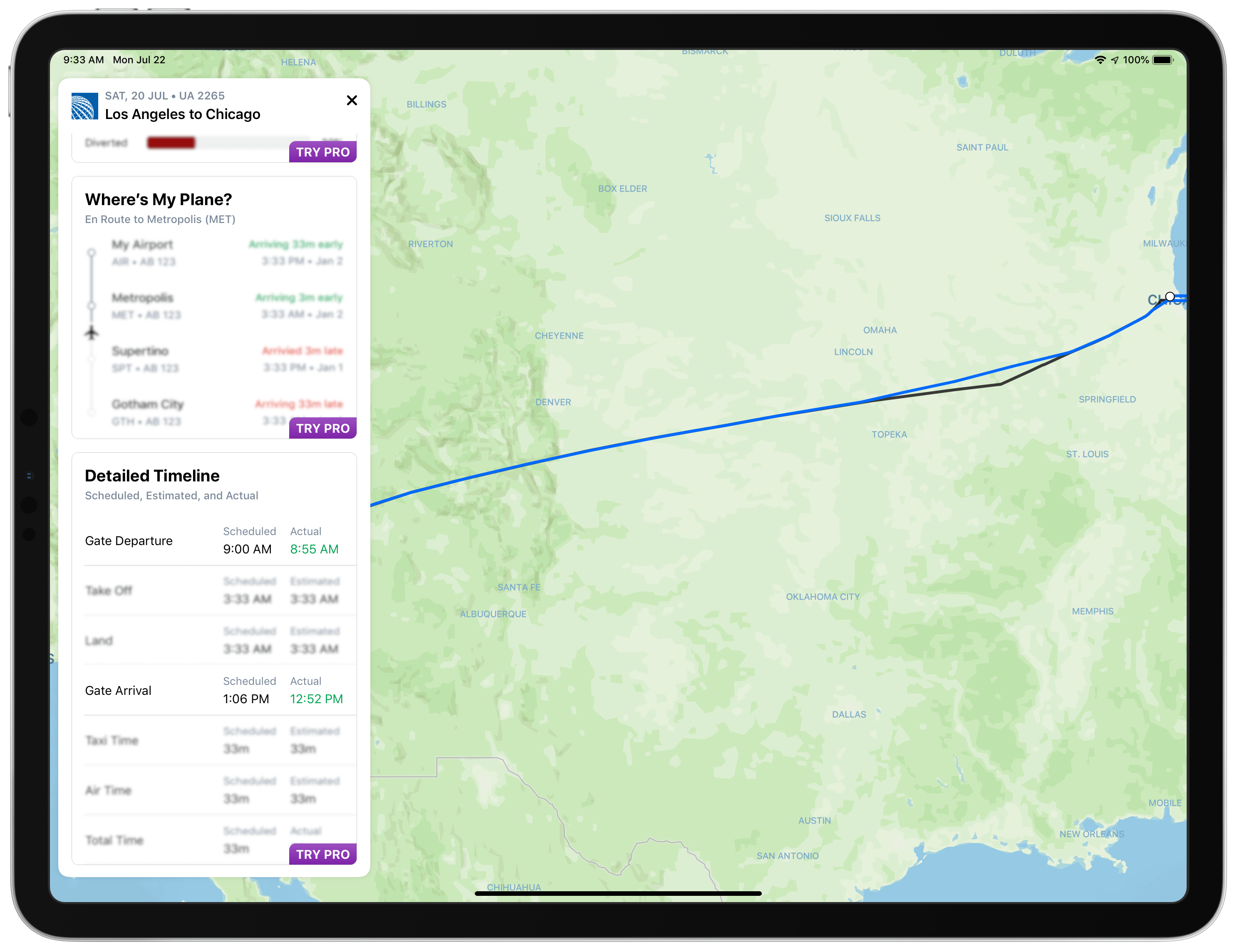
Using the free version of Flighty means scrolling past blurred out placeholder data and ‘Try Pro’ prompts to see all of the free content.
As I’ve outlined, not all of the flight data delivered by Flighty requires a subscription. However, a significant impediment to using the free version of Flighty is that the paid content sections are not hidden if you don’t subscribe to the app. Instead, they appear with blurred out placeholder data with a ‘Try Pro’ prompt in the corner of the section. Because data that is part of the free version of the app is interspersed with the blurred placeholder data, you’ll have to scroll past five ‘Try Pro’ labels to see all of the free information. That’s not an issue if you just want the basics like gate information and arrival and departure times, which are displayed at the top of Flighty’s card UI, but for anything else, it’s a poor user experience that is directly at odds with the app’s focus on design.
Another marquee feature of Flighty is push notifications, which are subscription-only. Flighty’s push notifications, which feature custom tones depending on the alert’s urgency, are convenient when you’re traveling because they eliminate the need to pull out your iPhone, unlock it, and scroll through the app. Instead, you can rely on the notifications on your iPhone’s Lock screen or an Apple Watch, if you have one.
Flighty divides notifications into four categories that can be turned on or off. The first is ‘Basics,’ which includes notifications of gate information, delays, and similar events. Next, there’s ‘Above & Beyond,’ which consists of the status of your inbound aircraft, and related information. ‘Flight Plan’ notifies you with a map of your anticipated flight path when it’s filed with the pilot, and finally, ‘Arrival Information’ includes landing alerts and gate and baggage claim information.
In my testing, I only turned on the Basics and Arrival Information notifications but seemed to get everything the app had to offer, which appeared to be a bug and was too many notifications for my tastes. I appreciate that some people may want as much data about a flight as possible, but bugs aside, I’d still like to see more fine-grained control over notifications added to Flighty to allow users to tailor the experience to their individual needs better.
Flighty also tracks your past flights on its map and with statistics like your total miles and number of flights flown, as well as the number of airports and countries you’ve visited and the time you’ve spent in the air. The section, which is called My Flight Log, also lists each of your past flights, which can be sorted in several different ways and tapped to reveal details about each. Although I didn’t try these features, the app also integrates with TripIt, can sync with your calendar, and will add flights from email messages you forward to a Flighty email address.
Over the past few months, I’ve used Flighty in pro mode to track two trips I took to California and another my wife took to Ireland, and I’ve come away impressed. The design and organization of flight information are fantastic. Everything is easy to read, and although it requires some swiping to get to the pro data, that’s much easier to do than poking through multiple views as you walk through an airport. Although I’d like to have more control over the push notifications, I’ve been generally happy with them too.
That said, I don’t plan to subscribe to Flighty. I don’t travel enough for it to be worth the expense of the subscription. Flighty is $69.99/year, although it’s currently $49.99 as part of the launch; you can also subscribe monthly for $8.99. The monthly option is a nice one if you occasionally find yourself flying a lot, and I could see myself trying that option. However, I usually fly just five or six times per year, so it’s unlikely either plan will ever fit my travel needs.
I also don’t feel like I need the detailed information that Flighty has to offer. I suppose an early warning about a delay could mean I don’t arrive at the airport earlier than necessary, and for some people the information may help to provide a sense of control over an uncontrollable situation. However, the data won’t prevent the delay, so I don’t place much value on getting that information a little earlier than someone else.
It may be a different story if you travel a lot and getting fast alerts about potential delays and other flight information is essential to you. In that case, Flighty is an excellent option. It’s expensive, but you won’t find another flight tracking app with its depth of data and level of polish. As with any pro app, Flighty is targeted at a narrow segment of a bigger market. It’s not the right fit for me, but I expect people who live on the go will subscribe to Flighty to try to improve their travel experiences.
Flighty is available on the App Store as a free download with limited features. The pro features are available as a subscription for $8.99/month or $69.99/year, although for a limited time, Flighty is offering the annual subscription for $49.99.



